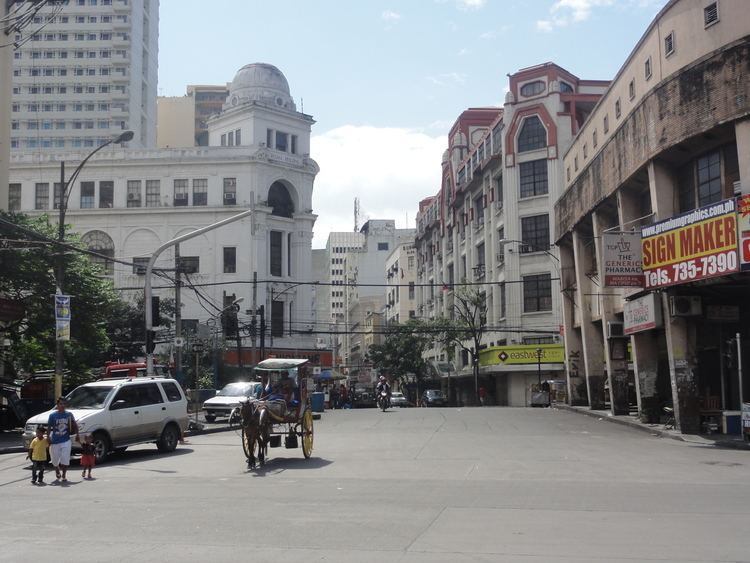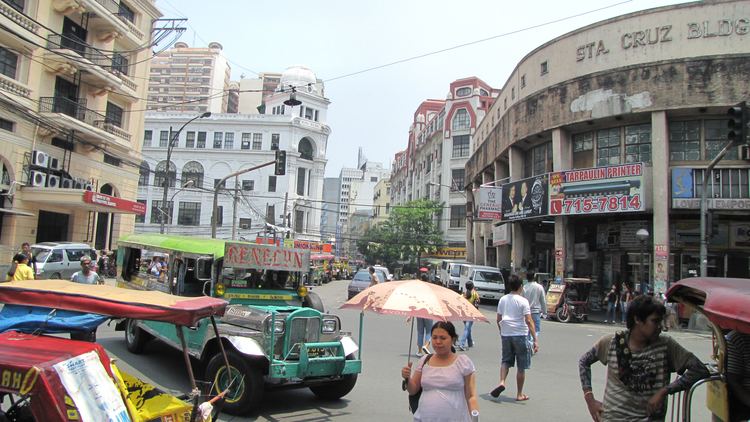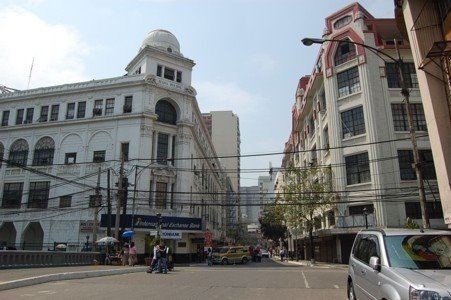Existed: 1594 – present | Constructed 1594 | |
 | ||
West end: Plaza Moraga and Quintin Paredes Street, Binondo, Manila | ||
Escolta street tour guiding bstm 2 2n
Escolta Street is a historic east-west street located in the old downtown district of Binondo in Manila, Philippines. It runs parallel to the Pasig River, from Plaza Santa Cruz to Plaza Moraga and Quintin Paredes Street. The street is home to several fine examples of early skyscraper design in the Philippines. In Spanish, it is known as calle de la Escolta. Its definition as a historic financial district includes Escolta and other surrounding streets of Binondo and Santa Cruz.
Contents

History
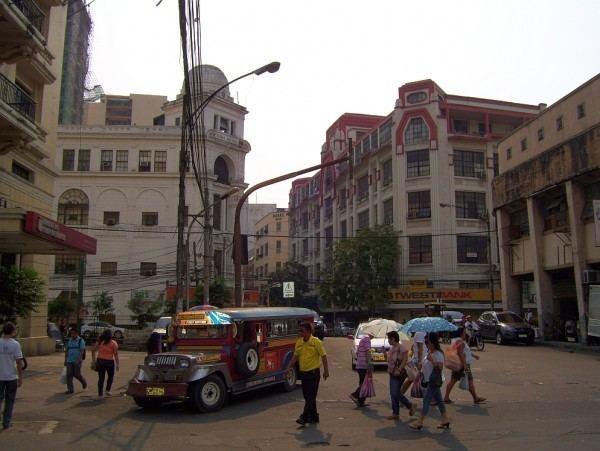
One of the oldest streets in Manila, Escolta was created in 1594. Its name was derived from the Spanish word escoltar, meaning "to escort". Escolta was known for its concentration of immigrant merchants, mainly from Fujian, China, who came to make their fortune during the Manila-Acapulco Galleon trade. The street was lined with shops and boutiques selling imported goods from China, Europe and elsewhere in Latin America that arrived in the nearby port of San Nicolas. By the late 19th century, Escolta flourished into a fashionable business district hosting the city's tallest buildings as well as the Manila Stock Exchange. The shops were replaced by modern department stores and an electric tram line known as tranvia plied the street. Escolta served as the city's primary commercial district until its decline in the 1960s when the center of business gradually shifted to Makati.
In music
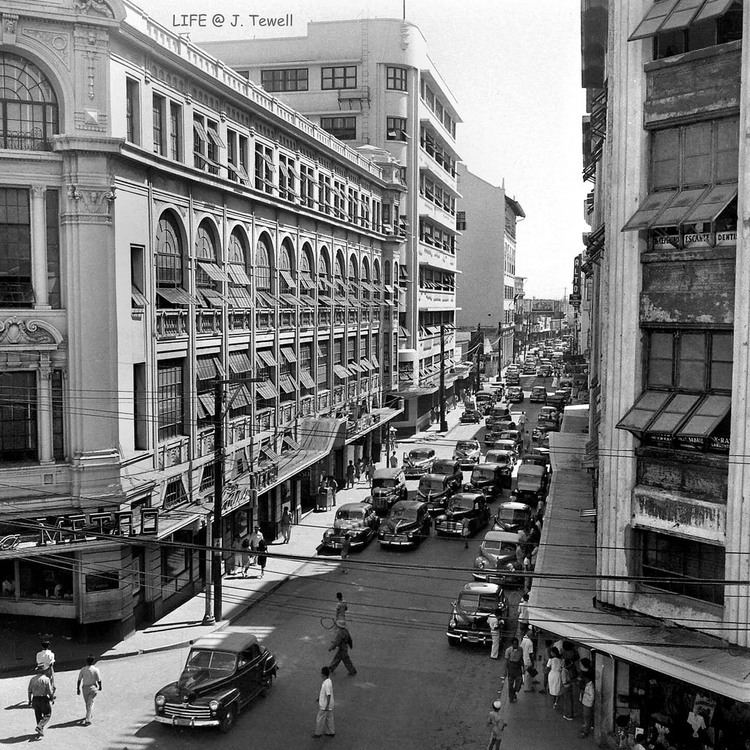
The first known reference to "La Escolta", can be heard on the zarzuela "El pay-pay de Manila" Al volver de la Escolta Charito tras comprarse un precioso paipay, y una carta encontró de Pepito en su rocabay, ¡Ay, que se le cai! Y en la carta le hablaba de amor ¡Ay Jesús, qué calor, qué calor!
Architectural Establishments

